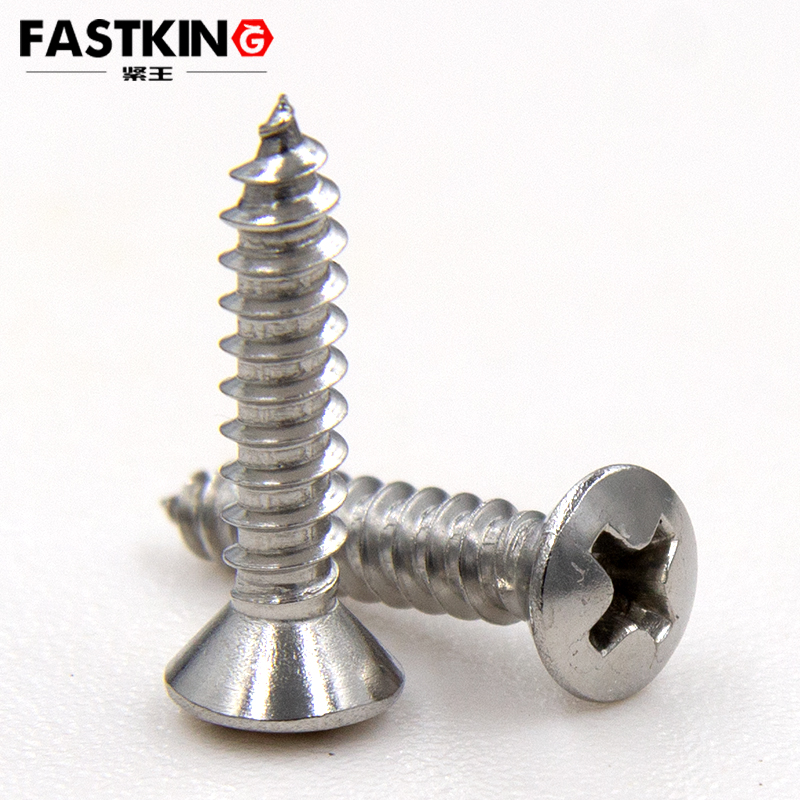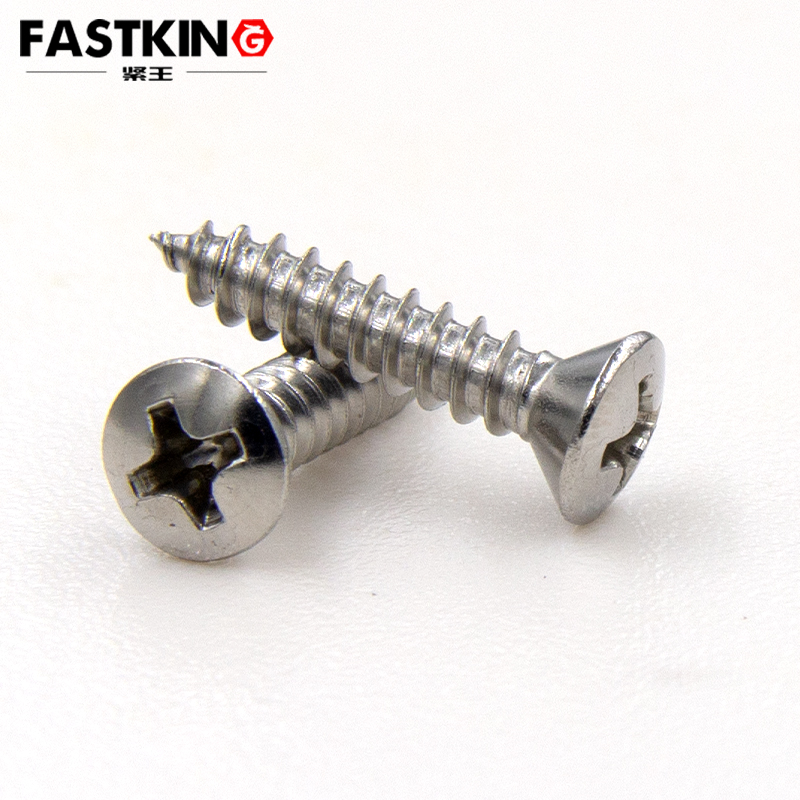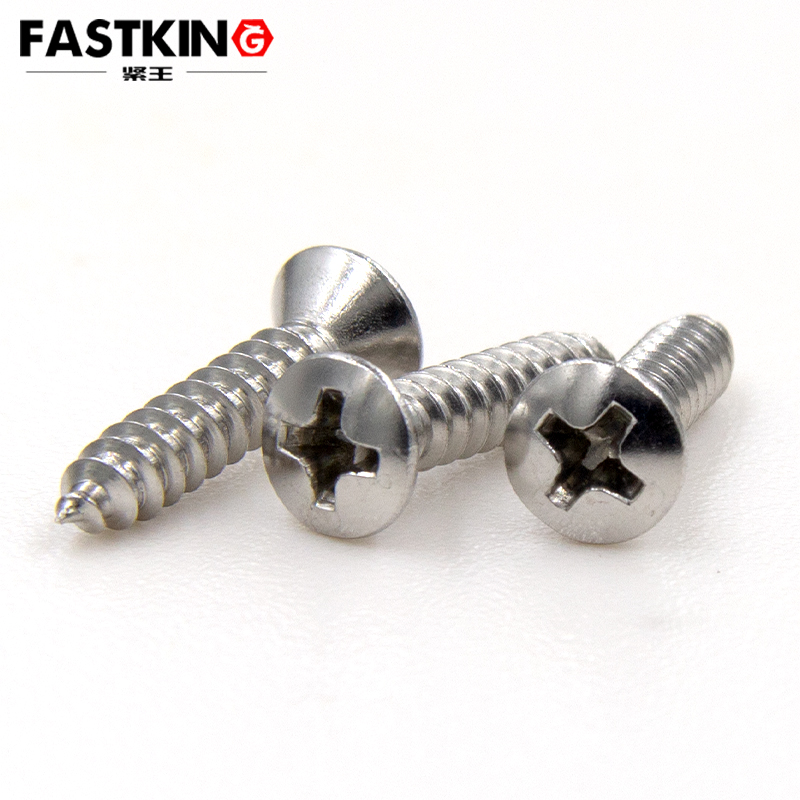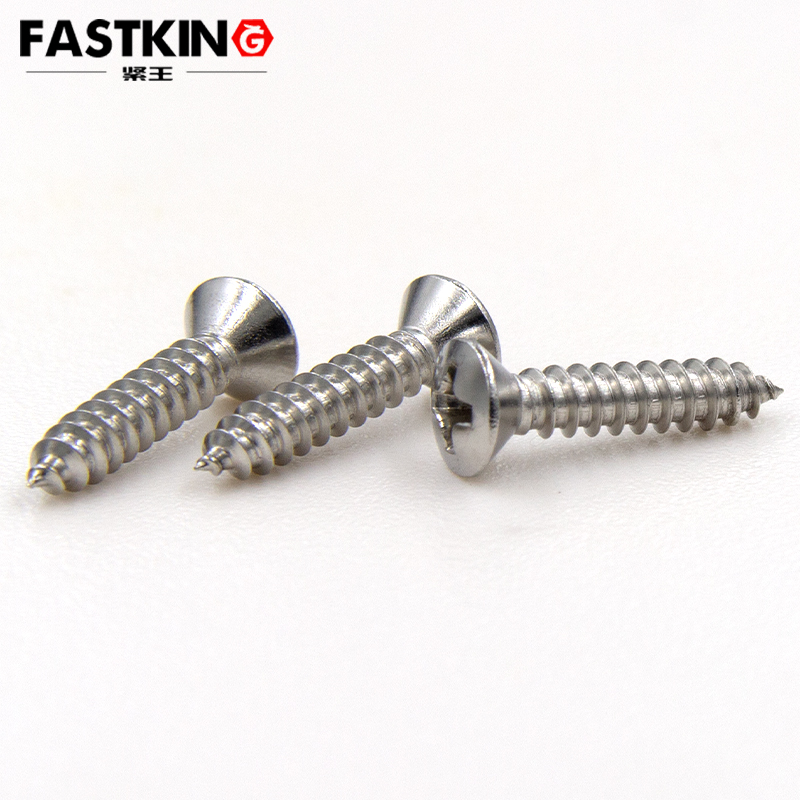The Use of Countersunk Cross-Head Self-Tapping Screws: Applications and Methods
Introduction
The countersunk cross-head self-tapping screw is a common type of fastener widely used in construction, furniture manufacturing, electronics assembly, and other fields. Its unique countersunk design and self-tapping function make it a preferred fastener in many industries. This article will provide a detailed introduction to the use of countersunk cross-head self-tapping screws and their applications.

Structure of Countersunk Cross-Head Self-Tapping Screws
Countersunk cross-head self-tapping screws are typically made from high-strength steel and consist of the following main parts:
1. Countersunk Head: This design provides a neat appearance and surface protection. The head of the screw is partially recessed into the material surface while a portion remains exposed.
2. Cross-Head Slot: This slot matches with a cross-head screwdriver, facilitating easy tightening and loosening.
3. Self-Tapping Threads: These threads have a self-tapping function, allowing the screw to cut its own threads in the material without the need for pre-drilling.
Methods of Using Countersunk Cross-Head Self-Tapping Screws
1. Selecting the Right Screw
Before using a countersunk cross-head self-tapping screw, it is essential to choose one that matches the thickness and strength of the material. Common sizes include M3, M4, M5, etc.

2. Pre-Drilling (Optional)
For hard materials such as metal or hardwood, pre-drilling is recommended. Use a drill bit slightly smaller than the screw diameter to create a pilot hole in the material, which helps prevent cracking.
3. Inserting the Screw
Align the tip of the countersunk cross-head self-tapping screw with the pilot hole or material surface, ensuring that the screw is perpendicular to the material.
4. Tightening the Screw
Use a cross-head screwdriver or an electric screwdriver to turn the screw clockwise, applying moderate force until the screw is fully inserted into the material.
Ensure that the head of the screw is partially recessed into the material surface while a portion remains exposed for the best appearance and secure fastening.
5. Checking the Fastening Effect

After tightening, check the fastening effect of the screw to ensure it is securely fixed in the material without any signs of looseness or slipping.
Applications of Countersunk Cross-Head Self-Tapping Screws
1. Construction Industry
In the construction industry, countersunk cross-head self-tapping screws are commonly used to secure drywall, metal frames, and wooden structures. Their self-tapping function and high strength allow for quick and secure fastening of various building materials.
2. Furniture Manufacturing
During furniture manufacturing, countersunk cross-head self-tapping screws are used to fix wooden panels, metal parts, and plastic components. The countersunk design not only provides a neat appearance but also prevents the screw head from protruding completely, avoiding scratches or damage to other surfaces.
3. Electronics Assembly
In electronics assembly, countersunk cross-head self-tapping screws are used to secure circuit boards, casings, and internal components. Their small size and precise fastening capability make them suitable for handling delicate electronic components.
4. Automotive Manufacturing
In automotive manufacturing, countersunk cross-head self-tapping screws are used to fix interior panels, dashboards, and body parts. Their high strength and corrosion resistance make them suitable for the demanding tasks in automotive production.
5. Home Appliance Manufacturing
In home appliance manufacturing, countersunk cross-head self-tapping screws are used to secure the casings and internal structures of washing machines, refrigerators, and air conditioners. Their self-tapping function and high strength allow for quick and secure fastening of various appliance components.
Precautions for Use

1. Select the Right Screw Size: Choose a screw that matches the thickness and strength of the material to avoid using screws that are too long or too short.
2. Avoid Over-Tightening: When tightening the screw, avoid excessive force to prevent damage to the screw or material.
3. Pre-Drilling: For hard materials, pre-drilling is recommended to prevent cracking or slipping of the screw.
4. Regular Inspection: Regularly check the fastening effect of the screws and replace any loose or damaged ones to ensure the safety and stability of the structure.
Conclusion
The countersunk cross-head self-tapping screw is a versatile and efficient fastener widely used in construction, furniture manufacturing, electronics assembly, automotive manufacturing, and home appliance manufacturing. By using and maintaining it correctly, the countersunk cross-head self-tapping screw can significantly improve work efficiency and operational safety. It is hoped that this article will help readers better understand and utilize countersunk cross-head self-tapping screws.
